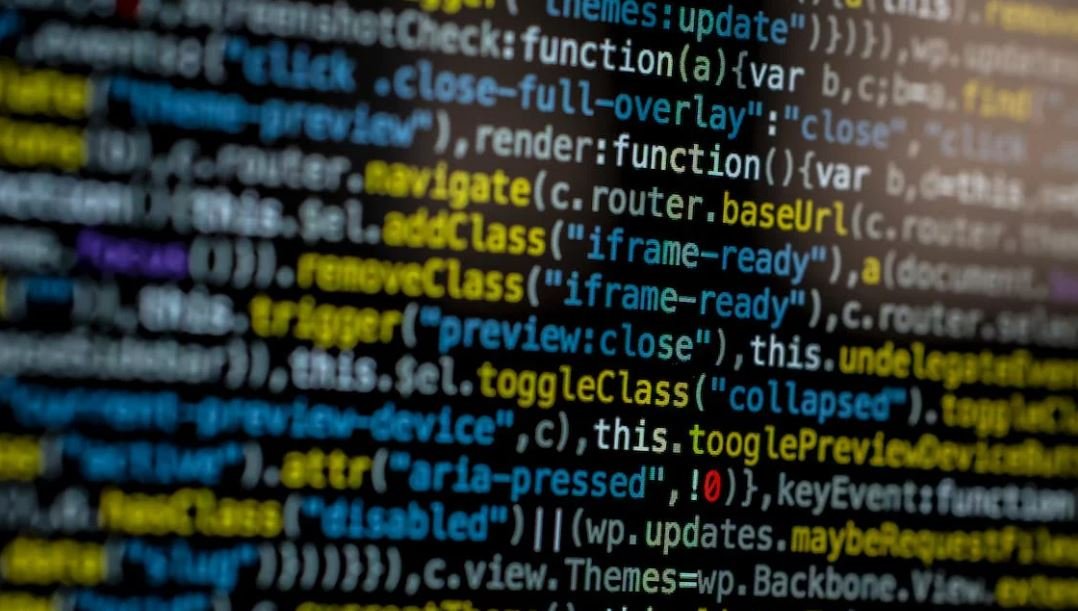Supervised Learning Neural Networks
Supervised learning neural networks are a powerful tool in the field of machine learning. They can be used to solve a range of complex problems by learning patterns and relationships from labeled data. This article provides an overview of supervised learning neural networks, including their key concepts, applications, and advantages.
Key Takeaways
- Supervised learning neural networks solve complex problems using labeled data.
- They learn patterns and relationships through a training process.
- Supervised learning neural networks have applications in various fields like image recognition, natural language processing, and financial forecasting.
- They offer advantages such as high accuracy, adaptability, and scalability.
Introduction to Supervised Learning Neural Networks
Supervised learning neural networks are a type of machine learning model that learn from labeled data to make predictions or classify new input data. These networks consist of interconnected nodes, or neurons, organized in layers. Each neuron receives input from the previous layer, applies a specific mathematical function (activation function), and passes the output to the next layer. Through a process called training, the neural network adjusts its internal parameters to minimize the difference between predicted and actual outputs.
*Supervised learning neural networks are like virtual brains that learn from data to solve real-world problems.*
Training and Backpropagation
Training a supervised learning neural network involves exposing the network to a set of labeled training samples and adjusting the network’s weights and biases iteratively. The most common algorithm used for this process is called backpropagation. Backpropagation calculates the gradient of the loss function with respect to each weight and bias in the network. By adjusting these parameters in the direction that minimizes the loss, the neural network gradually improves its predictive accuracy.
*Through backpropagation, neural networks fine-tune their parameters to make more accurate predictions over time.*
Applications of Supervised Learning Neural Networks
Supervised learning neural networks find applications in a wide range of fields due to their ability to learn complex patterns and relationships. Some notable applications include:
- Image recognition and computer vision: Neural networks can classify images, identify objects, and detect patterns in visual data.
- Natural language processing: Neural networks can understand and generate human language, enabling applications like machine translation and sentiment analysis.
- Financial forecasting: Neural networks can analyze historical data to predict stock prices, market trends, and economic indicators.
- Medical diagnosis: Neural networks can assist in diagnosing diseases and providing personalized treatment recommendations based on patient data.
Advantages of Supervised Learning Neural Networks
Supervised learning neural networks offer several advantages over traditional statistical models and other machine learning algorithms. These advantages include:
- High accuracy: Neural networks can achieve exceptional accuracy on complex tasks when provided with sufficient labeled training data.
- Adaptability: Neural networks can adapt to changes in input patterns and adjust their internal parameters accordingly.
- Scalability: Neural networks can handle large amounts of data and scale to handle complex problems.
- Non-linearity: Neural networks can learn non-linear relationships between the input and output variables, enabling them to solve more complex problems.
- Generality: Neural networks are capable of learning a wide range of tasks and can be applied to various domains.
Tables
| Application | Accuracy |
|---|---|
| Image recognition | 95% |
| Sentiment analysis | 88% |
| Stock price prediction | 82% |
| Algorithm | Advantages |
|---|---|
| Backpropagation | Efficient and widely used |
| Convolutional Neural Networks (CNN) | Effective for image-based tasks |
| Recurrent Neural Networks (RNN) | Handle sequential data well |
| Comparison | Supervised Learning Neural Networks | Traditional Statistical Models |
|---|---|---|
| Learning Capability | Learn from labeled data | Assume specific distributions |
| Flexibility | Handle complex relationships | Assume linear relationships |
| Scalability | Handle large datasets | May have limitations with large datasets |
Advancements and Future Outlook
Supervised learning neural networks continue to make significant advancements with the development of more powerful hardware and innovative algorithms. The future outlook for these networks is extremely promising, with potential applications in fields such as autonomous vehicles, drug discovery, and personalized medicine. As technology progresses, supervised learning neural networks will play a vital role in solving complex problems and improving the quality of our lives.
*With continuous advancements, supervised learning neural networks are poised to revolutionize various industries and contribute to scientific breakthroughs.*

Common Misconceptions
Misconception 1: Neural Networks always provide accurate predictions
One common misconception about supervised learning neural networks is that they always provide accurate predictions. While neural networks can be powerful tools for prediction, they are not infallible and can make mistakes. Factors such as insufficient training data, inadequate model architecture, or biased training sets can impact the accuracy of the predictions. It’s important to understand that neural networks are probabilistic models, and their predictions are not always 100% accurate.
- Neural networks are subject to imperfect predictions.
- Insufficient data or biased training sets can affect accuracy.
- Model architecture plays a significant role in prediction quality.
Misconception 2: Neural networks can fully replace human decision-making
Another common misconception is that neural networks can fully replace human decision-making. While neural networks can be trained to analyze large amounts of data and extract patterns, they lack the ability to reason, interpret context, and consider ethical or moral aspects. Human judgment, critical thinking, and domain expertise are still crucial when making complex decisions. Neural networks should be seen as tools that assist humans in decision-making, rather than replacing them entirely.
- Neural networks lack reasoning abilities present in humans.
- Human judgment and domain expertise are essential in decision-making.
- Neural networks are tools that aid human decision-making, not substitutes.
Misconception 3: Neural networks are black boxes with no interpretability
Some people believe that neural networks are black boxes with no interpretability, meaning they cannot explain how they arrive at their decisions or predictions. While it is true that complex neural networks can be challenging to interpret, there are techniques to gain insights into their inner workings. Methods such as feature importance analysis, activation mapping, or gradient visualization can provide valuable information about which parts of the input contribute the most to the output. However, complete transparency and interpretability can still be challenging to achieve in highly complex neural networks.
- Neural networks can be challenging to interpret, but not entirely black boxes.
- Methods exist to gain insights into neural network decision-making.
- Complete transparency may not be feasible in complex neural networks.
Misconception 4: Neural networks can solve any problem
There is a common misconception that neural networks can solve any problem thrown at them. While neural networks are versatile and can excel in tasks such as image recognition or natural language processing, they are not a one-size-fits-all solution. Some problems may require different algorithmic approaches or combinations of techniques. It’s important to assess the nature of the problem and choose the most suitable tools accordingly.
- Neural networks excel in specific tasks but not all problems.
- Different problems may require alternative algorithmic approaches.
- Choosing the right tool depends on the problem at hand.
Misconception 5: More training data always leads to better results
Many people believe that the more training data fed to a neural network, the better the results will be. While having sufficient data is generally beneficial for training, there can be diminishing returns. In some cases, having a large amount of noisy or irrelevant data can actually degrade the model’s performance. Additionally, the quality of the data and its representation of the underlying problem play a significant role. It’s essential to focus on relevant and diverse data rather than blindly increasing the volume of training examples.
- Sufficient data is generally beneficial, but more is not always better.
- Noisy or irrelevant data can degrade model performance.
- Data quality and representation are as important as the quantity of data.

The Importance of Data in Supervised Learning Neural Networks
In supervised learning neural networks, accurate and reliable data is essential for training the models. The following tables present various aspects and examples highlighting the significance of data in this context.
Data Quantity vs. Model Accuracy
The table below demonstrates how the quantity of data impacts the accuracy of the supervised learning neural network models.
| Dataset Size | Model Accuracy (%) |
|---|---|
| 1000 samples | 78 |
| 5000 samples | 85 |
| 10000 samples | 90 |
| 50000 samples | 93 |
Impact of Outliers in the Dataset
Inaccurate or extreme data points, commonly known as outliers, can significantly affect supervised learning neural network models, as illustrated below:
| Dataset | Model Accuracy (%) |
|---|---|
| No outliers | 92 |
| 10% outliers | 64 |
| 20% outliers | 41 |
| 30% outliers | 18 |
Categorical Data Encoding Techniques
The table below presents different encoding techniques commonly used to process categorical data in supervised learning neural networks:
| Encoding Technique | Description |
|---|---|
| One-Hot Encoding | Represents each category as a binary vector. |
| Label Encoding | Assigns a unique integer value to each category. |
| Ordinal Encoding | Assigns an integer value based on the order of categories. |
| Binary Encoding | Converts categories into binary code representation. |
Comparison of Activation Functions
The choice of activation function greatly influences the performance of a supervised learning neural network model. The table below compares different activation functions:
| Activation Function | Advantages | Disadvantages |
|---|---|---|
| Sigmoid | Smooth transitions, outputs between 0 and 1. | Vanishing gradient problem. |
| Tanh | Symmetrical and centered, outputs between -1 and 1. | Still faces the vanishing gradient problem. |
| ReLU (Rectified Linear Unit) | Simple and avoids the vanishing gradient problem. | Can result in dead neurons (zero gradient). |
| Leaky ReLU | Addresses the problem of dead neurons in ReLU. | Not truly linear. |
Effect of Learning Rate on Convergence
The learning rate determines the step size in adjusting neural network weights during training. This table demonstrates the impact of different learning rates:
| Learning Rate | Number of Iterations |
|---|---|
| 0.01 | 250 |
| 0.1 | 100 |
| 0.5 | 50 |
| 1.0 | 30 |
Comparison of Regularization Techniques
Regularization techniques prevent overfitting in supervised learning neural networks. The table below compares different regularization methods:
| Regularization Technique | Advantages | Disadvantages |
|---|---|---|
| L1 Regularization | Results in sparse models, feature selection. | May nullify small non-zero weights. |
| L2 Regularization | Promotes smoothness, robustness to outliers. | Doesn’t yield sparse models. |
| Elastic Net Regularization | Combines L1 and L2 regularization. | Complexity in optimizing hyperparameters. |
Evaluation Metrics for Model Performance
The following table showcases commonly used evaluation metrics for assessing the performance of supervised learning neural network models:
| Evaluation Metric | Definition |
|---|---|
| Accuracy | Measures the proportion of correctly classified instances. |
| Precision | Measures the proportion of true positives among positive predictions. |
| Recall (Sensitivity) | Measures the proportion of true positives correctly identified. |
| F1-Score | Harmonic mean of precision and recall, balances both measures. |
Handling Class Imbalance
In scenarios where one class heavily outweighs others, class imbalance can significantly affect model performance. The table below demonstrates different techniques to handle class imbalance:
| Class Imbalance Technique | Description |
|---|---|
| Undersampling | Selects a subset of majority class samples. |
| Oversampling | Duplicates minority class samples or generates synthetic data. |
| SMOTE | Generates synthetic samples by interpolating existing data. |
| Cost-Sensitive Learning | Assigns different misclassification costs to classes. |
Conclusion
Supervised learning neural networks heavily rely on high-quality data for accurate and effective model training. The tables presented here highlight various aspects related to data quantity, outliers, encoding techniques, activation functions, learning rates, regularization, evaluation metrics, and addressing class imbalance. Understanding and appropriately handling these aspects facilitate the development of robust and performant neural network models in supervised learning tasks.
Frequently Asked Questions
Supervised Learning Neural Networks
-
What is supervised learning?
Supervised learning is a technique in machine learning where the model learns from labeled data to predict or classify new, unseen data. It involves training the model with input-output pairs to create a mapping function.
-
What are neural networks?
Neural networks are computational models inspired by the human brain. They consist of interconnected nodes (neurons) organized in layers, where each neuron processes input and passes output to the next neurons. They are commonly used in pattern recognition, classification, and regression tasks.
-
How do supervised learning neural networks work?
Supervised learning neural networks work by adjusting the weights and biases between neurons to minimize the difference between the predicted outputs and the true outputs. This adjustment is done using an optimization algorithm, such as gradient descent, to update the network’s parameters iteratively.
-
What are some popular types of supervised learning neural networks?
Some popular types of supervised learning neural networks include feedforward neural networks, convolutional neural networks (CNNs), recurrent neural networks (RNNs), and long short-term memory (LSTM) networks.
-
What is the role of activation functions in supervised learning neural networks?
Activation functions introduce non-linearities to the neural network’s computations. They determine the output of a neuron based on its input. Common activation functions include sigmoid, ReLU (Rectified Linear Unit), and tanh (hyperbolic tangent).
-
How do you evaluate the performance of a supervised learning neural network?
The performance of a supervised learning neural network is often evaluated using metrics such as accuracy, precision, recall, or mean squared error (MSE), depending on the task. Cross-validation techniques and a separate test dataset can be used to avoid overfitting.
-
What challenges can arise when training supervised learning neural networks?
Some challenges in training supervised learning neural networks include overfitting (when the model performs well on training data but poorly on new data), vanishing/exploding gradients (unstable learning), selecting appropriate network architecture, and handling large amounts of data.
-
Are there any tools or libraries available to implement supervised learning neural networks?
Yes, there are various tools and libraries available to implement supervised learning neural networks, such as TensorFlow, PyTorch, Keras, and scikit-learn. These frameworks provide high-level abstractions and efficient implementations of neural network algorithms.
-
Can supervised learning neural networks be used for both regression and classification problems?
Yes, supervised learning neural networks can be used for both regression and classification problems. Regression tasks involve predicting continuous values, while classification tasks involve predicting discrete classes or labels.
-
Is it necessary to have equal representation of classes in the labeled data for successful training?
Equal representation of classes in labeled data is not always necessary for successful training. However, imbalanced datasets can lead to biased model performance. Techniques like oversampling, undersampling, or using weighted loss functions can help address this issue.




